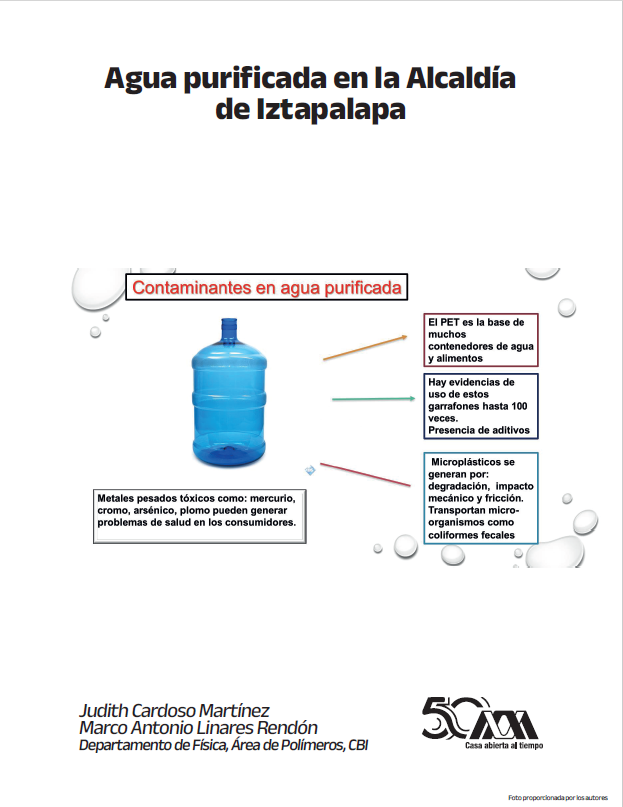Agua purificada en la Alcaldía de Iztapalapa
Abstract
Water purifiers appeared in the 2000s and have expanded throughout the country, with a much lower price than that offered by transnational corporations, and have taken root considerably, as they have found a niche of opportunity in low-income households, thanks to the new branch of the beverage industry opened by transnationals. They have also successfully contributed to reinforcing the belief of the inadequate quality of drinking water in Mexico, even though they themselves do not sell, in many cases, better quality water. Even though in this purifier the water is treated before being bottled to guarantee its best quality, the conditions with which the water is handled do not ensure that they are the best. Recently, our group has conducted an evaluation of 58 water purifiers of Iztapalapa. As part of our research, we have evaluated the parameters described in the official Mexican standard (NOM- 201. SSA-2915). The main contaminants found were heavy metals, with emphasis on iron and manganese, which are toxic in values higher than the maximum limits allowed by the norm. Two proposals for filters are presented to improve the quality of drinking water. Additionally, the presence of fecal coliforms and microplastics suggests a more advanced purification to avoid health problems for consumers.
Downloads
References
Casiano, N. Diseño de filtros para la potabilización del agua en la Alcaldía Iztapalapa. Tesis de Maestría (2024) en proceso. CONAGUA. (Diciembre de 2007) Manual de agua potable, alcantarillado y saneamiento. México. Recuperado el 26 de Agosto de 2023, http://www.conagua.gob.mx/
CONAGUA07/Publicaciones/Publicaciones/ Libros/11DisenoDePlantasPotabilizadorasTipoDeTecnologiaSimplificada. pdf
Domínguez, E. (2017). Determinación de los procesos hidrogeoquímicos participantes en la composición del agua de las fuentes de abastecimiento a pobladores de la delegación Iztapalapa, D.F., México. Ciudad de México, México. Recuperado el 08 de Junio de 2023, de http:// boletinsgm.igeolcu.unam.mx/bsgm/index. php/273-sitio/articulos/cuarta-epoca/ 6702/1318-6702-12-dominguez
Dozier, M., & McFarland, M. (2001). Problemas del agua potable: El hierro y el manganeso. Recuperado el 14 de Julio de 2021, de https://texaswater.tamu.edu/resources/ factsheets/l5451sironandman.pdf
INEGI. (29 de Enero de 2021). Recuperado el 16 de Julio de 2023, de https://www. inegi.org.mx/contenidos/saladeprensa/ boletines/2021/EstSociodemo/ResultCenso2020_ CdMx.pdf
Montero, D. El Abastecimiento de agua en Iztapalapa. Un análisis institucional. Revista de Economía Institucional. 22(43), 301-321. (2020). https//doi. org/10.18601/01245996.v22n43.13.
OMS. (2003). Iron in Drinking-water. Recuperado el 10 de Agosto de 2021, de https:// www.who.int/water_sanitation_health/ dwq/chemicals/iron.pdf
Vargas, C. J. (2015). Aplicación de un filtro de zeolita para potabilización del agua nivel domiciliario sitio Palestina Canton del Guabo provincia del Oro. Recuperado el 08 de Agosto de 2021, de http://repositorio.utmachala. edu.ec/bitstream/48000/3120/1/ TESIS%20-%20JONATHAN%20LARREA. pdf
Villegas, D. “Aislamiento e identificación de micobacterias a partir de agua purificada envasada en garrafón Tesis de licenciatura (2018) IPN






